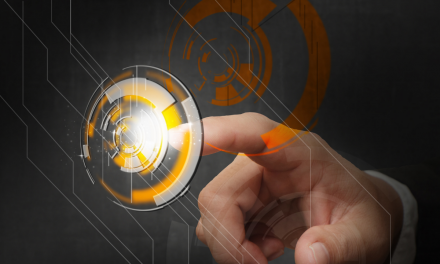
Migraine Headache

“Migraine” is a complex, chronic neurologic disorder characterized by recurrent moderate to severe headaches. The diagnosis of migraine headaches is subdivided into “migraine without aura” (formerly common migraine) and “migraine with aura” (formerly classic migraine). (1) “Aura” is the collection of autonomic nervous system symptoms that occur immediately prior to the headache. (2) Aura symptoms may include visual disturbances, extremity paresthesias, nausea, vomiting, and hypersensitivity to light or sound.
Explanations
Early explanations for the genesis of migraine headaches focused on cerebrovascular vasoconstriction with subsequent vasodilation. (3) Migraine is now recognized as a more complex series of neurologic and vascular events wherein vasodilation may or may not be present. (4-8) Evidence suggests that a migraineur’s brain is hyperexcitable and uniquely predisposed migraine headaches in much the same way that an epileptic is susceptible to seizures. (8,9)
Worldwide, the lifetime prevalence of migraine is 14%. (10) The one-year prevalence of migraine is 10% and shows little variance worldwide. (11) Over 30 million Americans suffer at least one migraine headache each year. (12) The condition affects 18% of females and 6% of males and is the leading cause of “severe” headaches. (12) One in six American women suffer from migraine headaches. (13) Over 80% of migraineurs miss work as a result of their headaches, with an average of 4-6 absences per year. (14) The economic cost of migraine headaches due to lost workdays is estimated at over 13 billion dollars per year in the United States.
Migraine Prevalence
The incidence of migraine without aura peaks in boys at age 10 and in girls age 17. (13) Interestingly, the incidence of migraine with aura peaks almost 5 years earlier for both sexes. (13) Before puberty, migraine is more common in boys. (15) At puberty, this ratio flips, and adult females are three times more likely than their male counterparts to experience migraines. (15) Migraine prevalence peaks in the third decade and attacks generally decrease in severity and frequency after age 40. (15,81) The onset of a new migraine headache after age 50 is rare. (15)
Risk Factors
Various risk factors have been identified for the development of this disorder. Migraine headaches demonstrate a strong genetic component. Having a first-degree relative with migraine increases one’s risk fourfold. (16) If one parent has migraines, the child has a 50% risk of developing the disorder. If both parents are affected, the risk climbs to 75%. (17) Overweight patients are more susceptible to migraines. (18) Vascular risk factors include hypertension, hypercholesterolemia, impaired insulin sensitivity, coronary artery disease, and a history of stroke. (18) Medication overuse is one of the more important risk factors for migraine progression. (19) Migraines tend to become “chronic” following overuse of acetaminophen, naproxen, aspirin, opiates, barbiturates, and triptans. (19) One study demonstrated that NSAIDs were beneficial when used less than 10 days a month but induced migraine progression to a chronic state when used at a higher frequency. (19)
The (hyperexcitable) migraineur brain is susceptible to various “triggers.” Migraines develop when the number of triggers exceeds a critical threshold for a given patient. Known triggers include: stress, smoking, strong odors (i.e. perfumes), bright or flickering lights, fluorescent lighting, excessive or insufficient sleep, head trauma, weather changes, motion sickness, cold stimulus (i.e. ice cream headaches), lack of activity/exercise, dehydration, hunger or fasting, and hormonal changes, including menstruation, and ovulation. (20) Upper cervical tension or the presence of a cervicogenic headache may be a trigger for a migraine. (59,65)
Medications
Certain medications, including estrogen, oral contraceptives, vasodilators such as nitroglycerin, histamines, reserpine, hydralazine, and ranitidine, are known triggers. (21) Food triggers are inconsistent among migraineurs, but the following foods are regularly implicated: alcohol (especially beer or red wine with tannins), excessive caffeine, artificial sweeteners, MSG, soy sauce, citrus foods, papayas, avocados, red plums, overripe bananas, dried fruits with sulfites (figs, raisins, etc), sour cream, buttermilk, nuts, peanut butter, sourdough bread, aged meats and cheeses, processed meats, and anything fermented, pickled or marinated. (22,23) It is unclear whether chocolate is a trigger to migraine, or a craving brought on at the onset of an attack. (22)
Stages
Migraine progresses through various symptomatic stages, including prodrome, aura, attack, and postdrome. The features of migraine headaches, including prodrome, vary widely but tend to be consistent for any given individual. (8)
Prodrome
Approximately 60% of sufferers report prodromal symptoms in the hours to days before headache onset. (8) These symptoms include lethargy, yawning, food cravings, mood changes, excessive thirst, fluid retention, constipation, diarrhea, and hypersensitivity to light, sound, or odors. (8)
Aura
About 20-33 percent of migraine sufferers experience auras during or before the headache attack. (17,26) Aura symptoms develop slowly, over 5-20 minutes and can last up to an hour. Symptoms are most commonly visual but may also include a combination of sensory and motor components. The most common visual symptom is a band of absent vision with an irregular shimmering border (scintillating scotoma). (8) Various other visual field defects, including tunnel vision, have been reported. Paresthesias are the next most common aura, occurring in 40% of cases. (28) Paresthesias may be followed by a numbness that often begins in the hand and progresses up the arm, to the face, lips, and tongue. Less than one in five migraine sufferers experience motor symptoms, including a sense of heaviness in their limbs or speech and language disturbances. (28) Motor and sensory complaints, including paresthesia and numbness rarely occur in isolation. (28) Visual disturbances that occur in isolation are called “ophthalmic” migraine, aka “retinal,” or “ocular.” Ophthalmic migraines generally produce a lateral field deficit and are more common in children. (8) The slow development of auras (5-20 minutes) is a helpful characteristic in distinguishing migraine from other cerebrovascular pathology. (Stroke, TIA) (28)
Attack Phase
During the attack phase, patients will typically complain of a unilateral, moderate to severe, throbbing or pulsating headache. The pain may be felt anywhere in the head and neck but is most common in the frontal, temporal and ocular areas. Headache pain develops over a period of one to two hours and can last between 4 and 72 hours. Patients often report hypersensitivity to sound or light and retreat to quiet, dark places. Eighty percent of migraine sufferers experience nausea. (30-32) Vomiting occurs in 1/3-1/2 of patients. (30-32) Seventy-five percent of migraine sufferers report some type of associated neck discomfort. (32)
Postdrome
Postdromal symptoms occur in the hours following a migraine and generally include fatigue, irritability, euphoria, myalgia, food insensitivity, or cravings. (22)
Diagnosis
According to the International Headaches Society, the diagnosis of migraine requires at least five episodic headaches, each lasting four to 72 hours associated with nausea/ vomiting or photophobia/ phonophobia and at least of two of the following characteristics: moderate to severe intensity, unilateral presence, pulsating quality, and aggravated by physical activity. (34) Although the aforementioned criteria “define” migraine, it is important to note that not all patients meet these criteria. Forty-one percent of migraine patients report bilateral pain and 50% report “non-pulsating” pain. (30-32)
Predictors
Researchers have identified the presence of nausea, disability, and photophobia as the most significant predictors for migraines. (36) A self-administered screening tool called ID migraine ® poses the following questions:
- Are you nauseated or sick to your stomach when you have a headache?
- Has the headache limited your activities for a day or more in the last three months?
- Does light bother you a lot more when you have a headache?
An affirmative response on 2 of 3 questions yields high sensitivity (81%) and specificity (75%). (36)
Red Flags
Clinicians should be alert to “red flags” that suggest a more threatening diagnosis, including: headaches that are becoming progressively worse over time, sudden onset, severe headaches, new or unfamiliar headache, headache following a recent head injury, unexplained weight loss, impaired consciousness, presence of fever, significant neck stiffness, rash, nuchal rigidity, vertigo, diplopia, drop attacks, difficulty speaking, difficulty swallowing, difficulty walking, and nystagmus.
The American Headache Society endorses the acronym “SNOOP” to identify worrisome headache red flags. (37-38)
Systemic symptoms: fever, weight loss, or the presence of systemic risk factors (i.e. cancer, HIV).
Neurologic signs: confusion, impaired alertness, or consciousness.
Onset: sudden or abrupt headaches that develop and peak very quickly.
Older: new headaches in patients over 50 (Giant cell arteritis, aka temporal arteritis)
Previous headache history: any new headache that deviates significantly from a prior pattern of frequency, severity, and clinical features.
Patient History
The diagnosis of migraine is based on the patient’s history. (39) A thorough physical and neurologic assessment is required to exclude a more threatening diagnosis; however, the results are normal in most migraine patients. Measurement of vital signs may demonstrate transient irregularities during a migraine attack, including tachycardia, bradycardia, hypertension, or hypotension. A physical exam may demonstrate a mild Horner’s syndrome (potosis, miosis) on the same side as the headache. (8) The presence of papilledema warrants consultation. Clinicians should palpate the temporal artery in those over age 50 to exclude Giant cell arteritis.
Concurrent Issues
Clinicians should be cognizant of potential concurrent cardiovascular and cerebrovascular issues when assessing migraine patients. The presence of migraine increases one’s risk of cardiovascular disease (stroke and myocardial infarction) by approximately 25%. Those experiencing migraine with aura have an almost twofold increased risk of cardiovascular disease. (41,42)
Radiology
Patients whose symptoms fit the broad definition of migraine rarely require imaging. (43) Plain film radiographs have little value in the diagnosis of migraine headache. When alternate pathology is suspected, MRI is the preferred neuroimaging choice over CT. (43) Suspicion of cerebral vascular pathology (aneurysm, vasculitis, arterial dissection) is better screened through magnetic resonance angiography (MRA). (44) The use of EEG lacks sensitivity and specificity for the diagnosis of migraine. (45)
Primary Conditions
The primary conditions to consider in the differential diagnosis of migraine headaches are a tension-type headache, TIA and stroke. Tension-type headaches are typically bilateral, non-pulsatile, and not aggravated by physical activity. Patients report that their symptoms are less intense and are generally not associated with nausea or vomiting. The symptoms of stroke or TIA generally develop more quickly, last longer (days to indefinitely), and do not occur in isolation. Other conditions to consider in the differential diagnosis of migraine headaches include giant cell arteritis, cluster headaches, acute glaucoma, meningitis, neoplasm, and cerebrovascular bleed. (46)
Treatment
Migraine treatment is subdivided into “abortive” therapies that seek to stop or reverse the progression of an existing headache and “prophylactic” treatments, which seek to prevent or reduce the frequency of future attacks. Abortive treatments are most effective when given within the first minutes of an attack. (47) Abortive medications include analgesics, NSAIDs, selective serotonin receptor agonists, and ergot alkaloids. (48) Narcotics are commonly used for the emergency treatment of migraine, although evidence suggests they are ineffective and may lead to prolonged hospital stays. (82) Overuse of abortive medical therapy may generate a self-perpetuating, chronic “rebound” cycle of migraines. (50,51) For recurrent headaches, the American Headache Society discourages the use of over-the-counter pain medications or the prescription of opioids or butalbital medications. (43)
Prophylactic Treatment
Prophylactic treatment is aimed at controlling migraine triggers. Several clinical trials and research studies suggest that spinal manipulation is an appropriate treatment for migraine headaches. (49,52-62) One study demonstrated that a “significant reduction” of migraine intensity in almost half of those patients receiving spinal manipulation. Nearly ¼ of migraine patients reported greater than 90% fewer attacks. (55) Spinal manipulation has demonstrated similar effectiveness but longer lasting benefit with fewer side effects when compared to a well-known and efficacious medical treatment (amitriptyline). (55,57,58,61) Spinal manipulation is thought to inhibit pain through various mechanisms, including CNS activation, the elevation of endorphin levels, disruption of pain-spasm-pain cycles, and reduction of mechanical triggers. (63-65)
Soft tissue manipulation and massage therapy have demonstrated success in the treatment of migraine headaches. (66,67) Upper cervical hypertonicity or joint dysfunction is thought to be a trigger for headaches, including migraines. (65) Clinicians should pay particular attention to the suboccipital muscles because of the rectus capitus posterior minor shares a dense connective tissue bridge with the pain-sensitive spinal dura at the level of the atlantooccipital junction. Soft tissue manipulation and myofascial release techniques are appropriate for the treatment of related cervical, interscapular, and shoulder girdle musculature. Clinicians should assess for and treat posture abnormalities, including weakness of the deep neck flexors and upper crossed syndrome. Acupuncture and biofeedback may be useful in the treatment of migraine. (51,68,69,79,83) The FDA recently approved a transcranial magnetic stimulator (TMS) for the treatment of migraine headaches. Early studies have demonstrated improved outcomes from TMS over no treatment. (70,71)
The patient’s self-management should focus on trigger avoidance and stress management. (72) A headache diary is essential to help identify and eliminate triggers. (73) No specific diet has been shown to help migraine, but patients should be coached to identify and eliminate their unique food triggers. (22) Patients with medication triggers, including oral contraceptives and hormones should consult with their medical provider about changing or discontinuing those drugs. (47) Exercising for 40 minutes, three times per week has shown similar benefits to a proven prophylactic medication. (84) Overweight migraineurs should be given dietary advice. Migraineurs with aura should be counseled on the increased risk of stroke associated with smoking and oral contraceptive use. (8) Limited data support the use of Feverfew (125mg/ day), riboflavin (400mg/ day), and Magnesium (400-600mg/ day) for the prevention of migraine in non-pregnant patients. (50,75-78,85)
Conclusion
Medications used for the prophylaxis of migraine include β-blockers, tricyclic antidepressants, and divalproex sodium or valproic acid. (50) Recently, Botox injections have been used with varying levels of success for the treatment of migraine. Surgical deactivation of migraine trigger points is discouraged by the American Headache Society. (43)
References
1. The International Classification of Headache Disorders: 2nd edition. Cephalalgia. 2004;24 Suppl 1:9-160
2. International Headache Society. Headache Classification Subcommittee of the International Headache Society. Oxford, UK: Blackwell Publishing; 2005. The International Classification of Headache Disorders, 2nd Edition. 1st Revision.
3. Wolff, HG. Headache and other head pain. New York: Oxford University Press: 1948.
4. May A, Goadsby PJ. The trigeminovascular system in humans: pathophysiologic implications for primary headache syndromes of the neural influences on the cerebral circulation. J Cereb Blood Flow Metab. Feb 1999;19(2):115-27.
5. Dodick DW, Gargus JJ (August 2008). “Why migraines strike”. Sci. Am. 299 (2): 56–63
6. Waeber C, Moskowitz MA. Therapeutic implications of central and peripheral neurologic mechanisms in migraine. Neurology. Oct 28, 2003;61(8 Suppl 4): S9-20.
7. Moskowitz MA. The visceral organ brain: implications for the pathophysiology of vascular head pain. Neurology. 1991;41(2(Pt 1)):182–186.
8. Chawla J. Migraine Headache. Medscape. http://emedicine.medscape.com/article/1142556-overview Accessed 2/1/14
9. Welch KM. Contemporary concepts of migraine pathogenesis. Neurology. Oct 28, 2003;61(8 Suppl 4): S2-8.
10. Sun-Edelstein C, Mauskop A. Role of magnesium in the pathogenesis and treatment of migraine. Expert Rev Neurother. Mar 2009;9(3):369-79
11. Stovner L, Hagen K, Jensen R, et al. The global burden of headache: a documentation of headache prevalence and disability worldwide. Cephalalgia. 2007;27(3):193–210
12. Lipton RB, Scher AI, Kolodner K, Liberman J, Steiner TJ, Stewart WF. Migraine in the United States: epidemiology and patterns of health care use. Neurology. Mar 26 2002;58(6):885-94.
13. Stewart WF, Linet MS, Celentano DD, Van Natta M, Ziegler D. Age- and sex-specific incidence rates of migraine with and without visual aura. Am J Epidemiol. Nov 15 1991;134(10):1111-20
14. Burton WN, Landy SH, Downs KE, Runken MC. The impact of migraine and the effect of migraine treatment on workplace productivity in the United States and suggestions for future research. Mayo Clin Proc. May 2009;84(5):436-45.
15. Hsu LC, Wang SJ, Fuh JL. Prevalence and impact of migrainous vertigo in mid-life women: a community-based study. Cephalalgia. Jan 2011;31(1):77-83
16. Kors EE, Haan J, Ferrari MD. Genetics of primary headaches. Curr Opin Neurol. Jun 1999;12(3):249-54.
17. Cleveland Clinic. Diseases and Conditions- Migraine Headaches. http://my.clevelandclinic.org/disorders/migraine_headache/hic_migraine_headaches.aspx accessed 2/8/14.
18. Hamed SA. The vascular risk associations with migraine: relation to migraine susceptibility and progression. Atherosclerosis. Jul 2009;205(1):15-22
19. Bigal ME, Lipton RB. Excessive acute migraine medication use and migraine progression. Neurology. Nov 25 2008;71(22):1821-8
2 MacGregor EA. Menstrual migraine. Curr Opin Neurol. Jun 2008;21(3):309-15.
2 Allais G, Gabellari IC, De Lorenzo C, Mana O, Benedetto C. Oral contraceptives in migraine. Expert Rev Neurother. Mar 2009;9(3):381-93. http://reference.medscape.com/medline/abstract/19271947
22. Wöber C, Brannath W, Schmidt K, Kapitan M, Rudel E, Wessely P, et al. Prospective analysis of factors related to migraine attacks: the PAMINA study. Cephalalgia. Apr 2007;27(4):304-14.
23. University of California-Berkeley, University Health Services. Migraine Triggers. http://uhs.berkeley.edu/home/healthtopics/pdf/triggers.pdf. Accessed 2/8/14
26. Migraine.com. Migraine with Aura. http://migraine.com/migraine-types/migraine-with-aura/. Accessed 2/8/14.
28. Silberstein SD, Freitag FG. Preventative treatment of migraine. Neurology. 2003;60(7):S38-44.
30. Pryse-Phillips WEM, Dodick DW, Edmeads JG, et al. Guidelines for the diagnosis and management of migraine in clinical practice. Can Med Assoc J. 1997;156(9):1273-1287.
31. Russell MB, Rasmussen BK, Fenger K, Olesen J. Migraine without aura and migraine with aura are distinct clinical entities: a study of four hundred and eighty-four male and female migraineurs from the general population. Cephalalgia. 1996;16(4):239-245
32. Barbanti P, Fabbrini G, Pesare M, Cerbo R. Neurovascular symptoms during migraine attacks. Cephalalgia . 2001;21(4):295.
34. Headache Classification Committee of the International Headache Society. Classification and diagnostic criteria for headache disorders, cranial neuralgias and facial pain. Cephalalgia. 1988;8 Suppl 7:1-96.
36. Lipton RB. A self-administered screener for migraine in primary care: The ID MigraineTM validation study. Neurology. 2003;61:375–382.
37. Silberstein SD, Lipton RB, Dalessio DJ. Overview, diagnosis, and classification. In: Silberstein SD, Lipton RB, Dalessio DJ, eds. Wolff’s Headache And Other Head Pain. 7th ed. Oxford, England: Oxford University Press; 2001:20
38. Dodick DW. Adv Stud Med. 2003; 3 (6C): S550-S555
39. Headache Classification Committee of the International Headache Society. Classification and diagnostic criteria for headache disorders, cranial neuralgias and facial pain. Cephalalgia. 1988;8 Suppl 7:1-96.
41. Woodward M. Migraine and the risk of coronary heart disease and ischemic stroke in women. Womens Health (Lond Engl). Jan 2009;5(1):69-77.
42. Scher AI, Gudmundsson LS, Sigurdsson S, Ghambaryan A, Aspelund T, Eiriksdottir G, et al. Migraine headache in middle age and late-life brain infarcts. JAMA. Jun 24 2009;301(24):2563-70
43. American Headache Society (September 2013), “Five Things Physicians and Patients Should Question”, Choosing Wisely: an initiative of the ABIM Foundation (American Headache Society), retrieved 10 December 2013
44. Leclerc X, Gauvrit JY, Nicol L, Pruvo JP. Contrast-enhanced MR angiography of the craniocervical vessels: a review.Neuroradiology. 1999;41(12):867-874
45. Report of the Quality Standards Subcommittee of the American Academy of Neurology. Practice Parameter: The electroencephalogram in the evaluation of headache (summary statement). Neurology. 1995;45:1411-1413
46. Gilmore, B; Michael, M (2011-02-01). “Treatment of acute migraine headache”. American family physician 83 (3): 271–80.
47. Kelman L. Women’s issues of migraine in tertiary care. Headache. Jan 2004;44(1):2-7.
48. Matchar DB, Young WB, Rosenberg JA, et al. Evidence-based guidelines for migraine headache in the primary care setting: Pharmacological management of acute attacks. American Academy of Neurology. Accessed February 10, 2011.
49. Astin JA, Ernst E: The effectiveness of spinal manipulation for the treatment of headache disorders: a systematic review of randomized clinical trials. Cephalalgia 2002, 22: 617-623.
50. Dikran Parsekyan. Migraine prophylaxis in adult patients West J Med. 2000 November; 173(5): 341–345.
51. Tfelt-Hansen P. Prophylactic pharmacotherapy of migraine: some practical guidelines. Neurol Clin 1997;15: 153-165.
52. Bronfort G, Nilsson N, Haas M, Evans R, Goldsmith CH, Assendelft WJ, et al: Non-invasive physical treatments for chronic/recurrent headache. Cochrane Database Syst Rev 2004, CD001878.
53. Parker GB, Pryor DS, Tupling H: Why does migraine improve during a clinical trial? Further results from a trial of cervical manipulation for migraine. Aust N Z J Med 1980, 10: 192-198.
54. Tuchin PJ, Pollard H, Bonello R: A randomized controlled trial of chiropractic spinal manipulative therapy for migraine. J Manipulative Physiol Ther 2000, 23: 91-95.
55. Nelson CF, Bronfort G, Evans R, Boline P, Goldsmith C, Anderson AV: The efficacy of spinal manipulation, amitriptyline and the combination of both therapies for the prophylaxis of migraine headaches. J Manipulative Physiol Ther 1998, 21: 511-519.
56. Harris SP. Chiropractic management of a patient with migraine headache. J Chiropr Med. 2005;4(1):25–31
57. Biondi DM. Physical treatments for headache: a structured review. Headache. 2005;45(6):738–746.
58. Bronfort G, Assendelft WJ, Evans R, et al. Efficacy of spinal manipulation for chronic headache: a systematic review. J Manipulative Physiol Ther. 2001;24(7):457–466.
59. Younes Jahangiri Noudeh, Nasibeh Vatankhah, and Hamid R. Baradaran, Reduction of Current Migraine Headache Pain Following Neck Massage and Spinal Manipulation Int J Ther Massage Bodywork. 2012; 5(1): 5–13.
60. Stodolny J, Chmielewski H. Manual therapy in the treatment of patients with cervical migraine. Manual Med 1989; 4:49-51
61. Boline P et al. Spinal Manipulation vs. Amitriptyline for the Treatment of Chronic Tension-type Headaches: A Randomized Clinical Trial J Manipulative Physiol Ther 1995 (Mar); 18 (3): 148–154
62. Bryans R, Descarreaux M, Duranleau M, Marcoux H, Potter B, Ruegg R, Shaw L, Watkin R, White E. Evidence-based guidelines for the chiropractic treatment of adults with headache. J Manipulative Physiol Ther. 2011 Jun;34(5):274-89.
63. Vicenzino B, Collins D, Benson H, et al. An investigation of the interrelationship between manipulative therapy-induced hypoalgesia and sympathoexcitation. J Manipulative Physiol Ther. 1998;21(7):448–453.
ddd64. Maigne JY, Vautravers P. Mechanism of action of spinal manipulative therapy. Joint Bone Spine. 2003;70(5):336–341.
65. Gay RE, Nelson CF. Clinical efficacy of chiropractic treatment. In: Wainapel SF, Fast A, editors. Alternative Medicine and Rehabilitation: A Guide for Practitioners. New York: Demos Medical Publishing; 2003. pp. 67–71.
66. Lawler SP, Cameron LD. A randomized, controlled trial of massage therapy as a treatment for migraine. Ann Behav Med. 2006;32(1):50–59
67. Lipton SA. Prevention of classic migraine headache by digital massage of the superficial temporal arteries during visual aura. Ann Neurol. 1986;19(5):515–516.
68. Linde K, Allais G, Brinkhaus B, Manheimer E, Vickers A, White AR: Acupuncture for migraine prophylaxis. Cochrane Database Syst Rev 2009, CD001218.
69. Nestoriuc Y, Martin A, Rief W, Andrasik F: Biofeedback treatment for headache disorders: a comprehensive efficacy review. Appl Psychophysiol Biofeedback 2008, 33: 125-140.
70. US Food and Drug Administration. FDA allows marketing of first device to relieve migraine headache pain [press release]. December 13, 2013. Available at http://www.fda.gov/NewsEvents/Newsroom/PressAnnouncements/ucm378608.htm.
71. Jeffrey S. FDA approves first device to treat migraine pain. Medscape Medical News
72. Scotish Intercollegiate Guideline Network: Diagnosis and management of headache in adults. 2008, 107. :50-59.
73. Noble SL, Moore KL. Drug treatment of migraine: part II. Preventive therapy. Am Fam Physician 1997;56: 2279-2286.
75. Ramadan NM, Silberstein SD, Freitag FG, Gilbert TT, Frishberg BM, for the US Headache Consortium. Evidence-based guidelines for migraine headache in the primary care setting: pharmacological management for prevention of migraine. Am Acad Neurol Web site
76. Schoenen J, Jacquy J, Lenaerts M. Effectiveness of high-dose riboflavin in migraine prophylaxis: a randomized controlled trial. Neurology 1998;50: 466-470.
77. Peikert A, Wilimzig C, Kohne-Volland R. Prophylaxis of migraine with oral magnesium: results from a prospective, multi-center, placebo-controlled and double-blind randomized study. Cephalalgia 1996;16: 257-263.
78. Pfaffenrath V, Wessely P, Meyer C, et al. Magnesium in the prophylaxis of migraine—a double-blind placebo-controlled study. Cephalalgia 1996;16: 436-440.
79. Evans RM. Managing migraine today (II): Pharmacologic and nonpharmacologic treatment. JAMA Migraine Information Center Web site.
80. Cutrer FM, Charles A. The neurogenic basis of migraine. Headache. Oct 2008;48(9):1411-4.
81. Bille B. Migraine in childhood and its prognosis. Cephalalgia. Jun 1981;1(2):71-5.
82. Sahai-Srivastava S, Desai P, Zheng L. Analysis of headache management in a busy emergency room in the United States. Headache. 2008 Jun;48(6):931-8.
83. Yang CP, Chang MH, Liu PE, Li TC, Hsieh CL, Hwang KL, Chang HH. Acupuncture versus topiramate in chronic migraine prophylaxis: a randomized clinical trial. Cephalalgia. 2011 Nov;31(15):1510-21.
84. Varkey E, Cider A, Carlsson J, Linde M. Exercise as migraine prophylaxis: a randomized study using relaxation and topiramate as controls. Cephalalgia. 2011 Oct;31(14):1428-38.
85. Chiu HY, Yeh TH, Huang YC, Chen PY. Effects of Intravenous and Oral Magnesium on Reducing Migraine: A Meta-analysis of Randomized Controlled Trials. Pain Physician. 2016 Jan;19(1): E97-112.


















